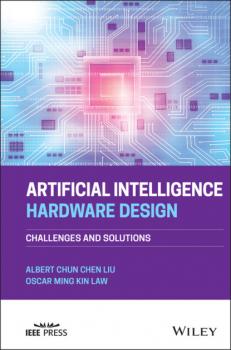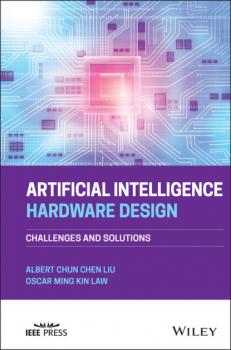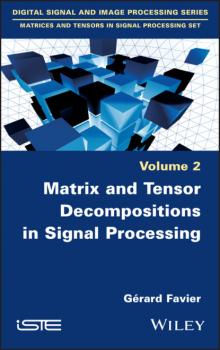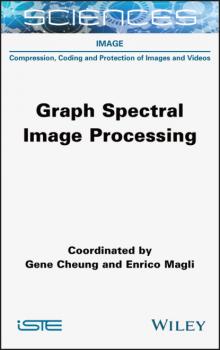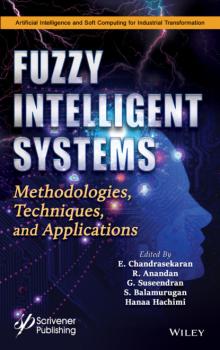Программы
Различные книги в жанре ПрограммыArtificial Intelligence Hardware Design
ARTIFICIAL INTELLIGENCE HARDWARE DESIGN Learn foundational and advanced topics in Neural Processing Unit design with real-world examples from leading voices in the field In Artificial Intelligence Hardware Design: Challenges and Solutions , distinguished researchers and authors Drs. Albert Chun Chen Liu and Oscar Ming Kin Law deliver a rigorous and practical treatment of the design applications of specific circuits and systems for accelerating neural network processing. Beginning with a discussion and explanation of neural networks and their developmental history, the book goes on to describe parallel architectures, streaming graphs for massive parallel computation, and convolution optimization. The authors offer readers an illustration of in-memory computation through Georgia Tech’s Neurocube and Stanford’s Tetris accelerator using the Hybrid Memory Cube, as well as near-memory architecture through the embedded eDRAM of the Institute of Computing Technology, the Chinese Academy of Science, and other institutions. Readers will also find a discussion of 3D neural processing techniques to support multiple layer neural networks, as well as information like: A thorough introduction to neural networks and neural network development history, as well as Convolutional Neural Network (CNN) models Explorations of various parallel architectures, including the Intel CPU, Nvidia GPU, Google TPU, and Microsoft NPU, emphasizing hardware and software integration for performance improvement Discussions of streaming graph for massive parallel computation with the Blaize GSP and Graphcore IPU An examination of how to optimize convolution with UCLA Deep Convolutional Neural Network accelerator filter decomposition Perfect for hardware and software engineers and firmware developers, Artificial Intelligence Hardware Design is an indispensable resource for anyone working with Neural Processing Units in either a hardware or software capacity.
НДС. Практические примеры ведения учета в «1С:Бухгалтерии 8». Издание 3
Книга содержит практические рекомендации по ведению учета НДС в программе «1С:Бухгалтерия 8» (редакция 3.0) с применением интерфейса «Такси». Порядок учета расчетов по НДС проиллюстрирован многочисленными примерами, часто встречающимися на практике. Со всеми рассмотренными в книге примерами можно ознакомиться с помощью учебной базы конфигурации программы «1C:Бухгалтерия 8 ПРОФ» (версия 3.0.95.24) или «1С:Бухгалтерия 8 КОРП» (версия 3.0.95.24). Эти базы рекомендуется запускать под управлением платформы «1С:Предприятие 8» версии не ниже 8.3.17.1851, в том числе с ее учебной версией. Книга рекомендована бухгалтерам, консультантам, студентам и преподавателям, а также претендентам на получение сертификатов «1С:Профессионал», «1С:Специалист-консультант» по внедрению прикладного решения «1С:Бухгалтерия 8».
Graph Spectral Image Processing
Graph spectral image processing is the study of imaging data from a graph frequency perspective. Modern image sensors capture a wide range of visual data including high spatial resolution/high bit-depth 2D images and videos, hyperspectral images, light field images and 3D point clouds. The field of graph signal processing – extending traditional Fourier analysis tools such as transforms and wavelets to handle data on irregular graph kernels – provides new flexible computational tools to analyze and process these varied types of imaging data. Recent methods combine graph signal processing ideas with deep neural network architectures for enhanced performances, with robustness and smaller memory requirements.<br /><br />The book is divided into two parts. The first is centered on the fundamentals of graph signal processing theories, including graph filtering, graph learning and graph neural networks. The second part details several imaging applications using graph signal processing tools, including image and video compression, 3D image compression, image restoration, point cloud processing, image segmentation and image classification, as well as the use of graph neural networks for image processing.
Matrix and Tensor Decompositions in Signal Processing
The second volume will deal with a presentation of the main matrix and tensor decompositions and their properties of uniqueness, as well as very useful tensor networks for the analysis of massive data. Parametric estimation algorithms will be presented for the identification of the main tensor decompositions. After a brief historical review of the compressed sampling methods, an overview of the main methods of retrieving matrices and tensors with missing data will be performed under the low rank hypothesis. Illustrative examples will be provided.
Concepts and Semantics of Programming Languages 2
This book – composed of two volumes – explores the syntactical constructs of the most common programming languages, and sheds a mathematical light on their semantics, providing also an accurate presentation of the material aspects that interfere with coding.<br /><br /><i>Concepts and Semantics of Programming Languages 2</i> presents an original semantic model, collectively taking into account all of the constructs and operations of modules and classes: visibility, import, export, delayed definitions, parameterization by types and values, extensions, etc. The model serves for the study of Ada and OCaml modules, as well as C header files. It can be deployed to model object and class features, and is thus used to describe Java, C++, OCaml and Python classes.<br /><br />This book is intended not only for computer science students and teachers but also seasoned programmers, who will find a guide to reading reference manuals and the foundations of program verification.
